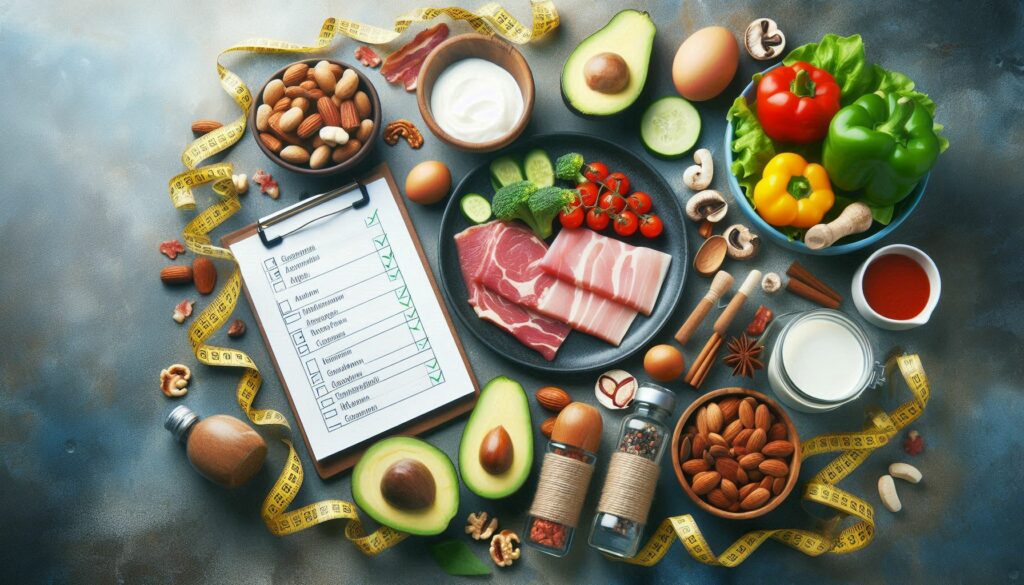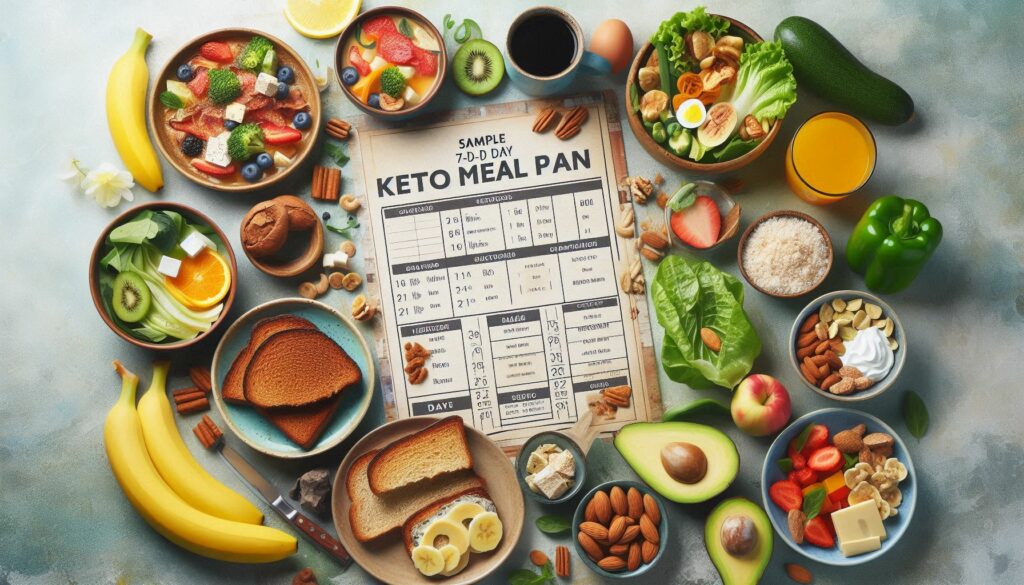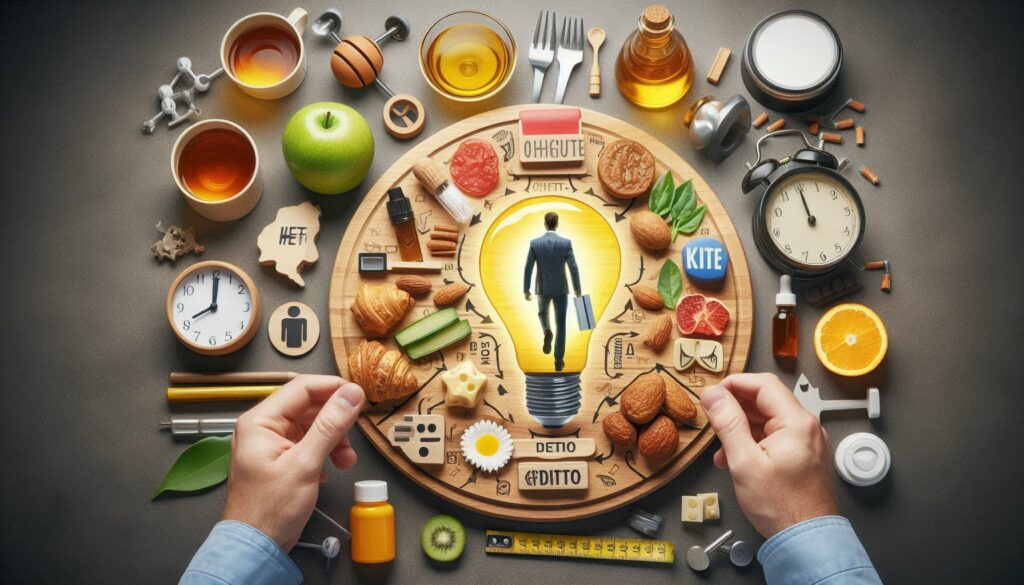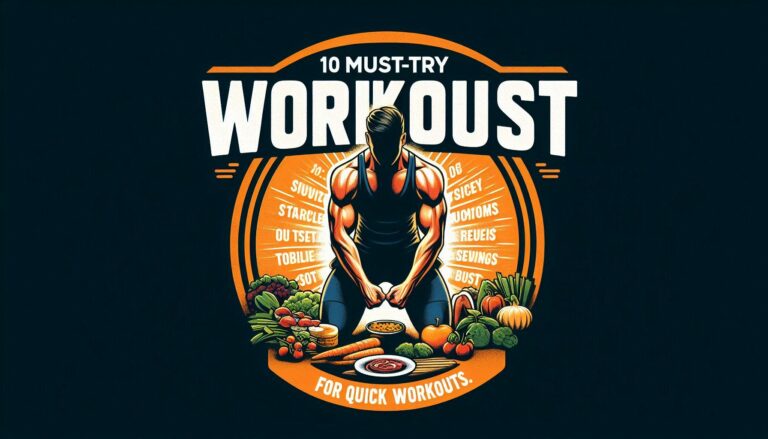Effective Keto Diet Plan for Weight Loss

Key Highlights
- The ketogenic diet is a well-known way to lose weight and boost your health. It’s all about eating foods that are high in fat but low in carbs, which can help with losing fat and getting a better body shape.
- By following this diet, your body enters a metabolic state called ketosis. In this state, it burns fat for energy instead of sugar. This switch can lead to several health perks like better blood sugar levels and lower chances of some illnesses.
- To make sure you’re doing the keto diet right, planning what you eat is key. You’ll want to stick to foods that fit within the keto guidelines.
- Before diving into the ketogenic diet, it’s smart to talk things over with someone who knows their stuff medically speaking.
Introduction
Starting a keto diet plan for weight loss means you cut down on carbs big time and swap them with healthy fats. When your body gets into ketosis, it’s really good at burning fat for energy. It’s super important to know the key parts of a keto diet like macros, foods rich in healthy fats, and where to get your protein from if you want to do well. By putting together balanced keto meals that have all the right stuff, not only can you speed up losing fat but also enjoy lots of health perks this way of eating brings, including fast and healthy weight loss. This is because when your body burns body fat for fuel, it produces ketones, substances made in your liver that can help with weight loss and overall health.
Essential Components of an Effective Keto Diet Plan for Weight Loss
To make a good keto diet plan for losing weight, it’s really important to know the main parts that go into it. The balance of macros is key to getting into ketosis, and you should eat lots of high-fat foods like fatty fish and use healthy oils. Protein helps keep your muscles strong, while eating vegetables with low carbs makes sure you get enough vitamins and minerals. It’s important to also incorporate whole grains into your diet for added fiber and nutrients. It’s okay to have some fruits, such as sweet potatoes, in moderation along with healthy fats, nuts, and dairy products which are all good for you too. Choosing the right sweeteners and drinking plenty of keto-friendly drinks also play a big role in putting together an effective meal plan for the keto diet.

1. Understanding Macros for Ketosis
To get into ketosis, it’s really important to know about macros. Macros are the big nutrients: fats, proteins, and carbs. When you’re following a keto diet plan, you should eat lots of fats, a good amount of protein, and very few carbs. About 70-80% of what you eat in a day should be fats; proteins need to make up around 20-25%, and carbohydrate intake should only be about 5-10% of your total calories for the day. Keeping an eye on these macros helps keep your body in ketosis which is great for losing weight effectively. However, it is important to note that this can be a restrictive diet, as carbs are restricted to no more than 50 grams per day. Making sure everything is balanced right will help make your keto journey successful.
2. High-Fat Foods to Include
Eating fatty fish like salmon and mackerel is great because they’re full of omega-3 fatty acids that help keep your heart healthy. Using avocado oil and olive oil in your meals adds monounsaturated fats, which make you feel full. For a boost in fat burning, try adding coconut oil since it has medium-chain triglycerides. Nuts and seeds are also good for getting healthy fats and important small nutrients into your diet. Throwing in a little butter and cheese can add some flavor without going overboard. These foods with lots of fat are key parts of the keto diet plan to help with weight loss by making sure every meal is both filling and nutritious.
3. Protein Sources for Muscle Maintenance
On a keto diet plan aimed at weight loss, it’s best to stick with lean protein sources such as chicken, turkey, and fish. These foods are packed with the essential amino acids your muscles need to fix themselves and grow stronger. For an extra boost in muscle maintenance and recovery without eating too much protein and adding too many carbs, you can include protein shakes in your diet. If you’re following a vegetarian or vegan lifestyle while on this ketogenic journey, don’t worry; tofu and tempeh are great plant-based options that fit perfectly into your regimen. It’s crucial to make sure you’re getting enough protein if keeping muscle mass is important to you while losing weight on a keto diet.
4. Low-Carb Vegetables for Nutrient Intake
Leafy greens, such as spinach and kale, are packed with important vitamins and minerals but don’t have many carbs. For a bit of variety in your meals that won’t mess with your blood sugar levels, you can also go for broccoli, cauliflower, and bell peppers. Adding these low-carb vegetables, including brussels sprouts, to your ketogenic diet, along with incorporating some plant-based options from the mediterranean diet, means you’re getting the good stuff your body needs without going overboard on carbs. Just make sure to keep an eye on how much carbohydrates you’re eating from these vegetables so you stay within your daily limits while still enjoying their benefits for health.
5. Fruits to Eat in Moderation
When you’re following a keto diet plan to shed some pounds, picking the right fruits is key. Blueberries, raspberries, and strawberries are top-notch choices because they don’t pack many carbs but are rich in fiber. This makes them perfect for eating in moderation. Avocados stand out too; even though we usually think of them as veggies, they’re actually fruits loaded with healthy fats and have very few net carbs. But watch out for fruit like bananas and grapes that have more sugar – these can mess with your body’s ketosis state. By adding different berries to your meals, not only do you get to enjoy tasty flavors but also essential nutrients that help along your weight loss journey.
6. Healthy Fats and Oils
Leafy greens, such as spinach and kale, are packed with important vitamins and minerals but don’t have many carbs. For a bit of variety in your meals that won’t mess with your blood sugar levels, you can also go for broccoli, cauliflower, and bell peppers. Adding these low-carb vegetables, including brussels sprouts, to your ketogenic diet, along with incorporating some plant-based options from the mediterranean diet, means you’re getting the good stuff your body needs without going overboard on carbs. Just make sure to keep an eye on how much carbohydrates you’re eating from these vegetables so you stay within your daily limits while still enjoying their benefits for health.
7. Nuts and Seeds for Snacking
On a ketogenic diet, nuts and seeds make perfect snacks because they’re packed with healthy fats but low in carbs. With walnuts, almonds, and chia seeds, you get that nice crunchy texture along with important nutrients your body needs. Pumpkin seeds and macadamia nuts are also great picks since they’re full of healthy fats and fiber to keep you satisfied. Nut butters, such as almond butter, sunflower butter, and peanut butter, are also great options for snacking. These options help meet your nutritional requirements while keeping hunger at bay on a low carb plan.
8. Dairy Products to Consume
When you’re on a keto diet plan aiming to shed some pounds, adding dairy products, such as cheese, butter, cream, and ice cream, can really help. Go for the full-fat kinds to keep your carb count low. Greek yogurt and cottage cheese are great too because they pack a lot of protein. But watch out for those with added flavors since they might have extra sugars in them. Dairy items, when consumed in moderation, can give you important nutrients while helping you maintain a keto-friendly diet. Just make sure to keep an eye on how much you eat so it fits into your daily macros.
9. Sweeteners That Won’t Break Ketosis
Erythritol, stevia, and monk fruit sweeteners are great for anyone on a keto meal plan because they don’t raise your blood sugar. This is key to staying in ketosis, where your body burns fat instead of carbs for energy. Unlike regular sugar that’s full of carbs, these options keep things sweet without messing up your diet. When planning meals for weight loss on a ketogenic diet, adding these can help you manage cravings smartly. However, it’s important to steer clear of artificial sweeteners like aspartame or maltitol since they might slow down your progress by affecting weight loss negatively.
10. Beverages to Stay Hydrated
On a keto diet plan aimed at losing weight, water plays a key role in keeping you hydrated and ensuring your body works properly. For those who like something different now and then, unsweetened tea and coffee are great choices because they’re full of antioxidants but don’t have the extra sugar. If you’re craving something with a bit of fizz, sparkling water is an awesome pick since it doesn’t pack any carbs. Making sure these drinks are part of what you drink every day can really help keep your hydration levels up, which is super important for staying healthy overall. It’s also wise to cut back or steer clear from sugary beverages to stay on track with maintaining ketosis effectively in your diet plan.
Planning Your Keto Meals
When you’re putting together your keto meals, make sure to mix in lots of healthy fats, a good amount of protein, and some veggies that don’t have many carbs. It’s important to plan out your meals so they have the right balance of these key parts. This helps with losing weight and keeping up with ketosis. To keep things nutritious and filling, throw in ingredients like fatty fish, leafy greens, and avocado oil into your dishes. By planning ahead for what you’ll eat during the week on your keto diet can really help you stick to it better and choose healthier options more easily, including making a shopping list for your trip to the grocery store. Don’t forget to download the Perfect Keto grocery list before heading out for your grocery shopping.
Sample 7-Day Keto Meal Plan

On the first day, you start with scrambled eggs and spinach made in coconut oil for breakfast. For lunch, there’s grilled chicken accompanied by avocado and a mix of greens. Dinner is baked salmon served with asparagus that has a bit of olive oil on it.
Moving to the second day, your morning meal is chia seed pudding sprinkled with berries. The midday meal consists of turkey wrapped in lettuce leaves with some mayonnaise added for flavor. Your evening ends with beef stir-fried alongside broccoli and served over cauliflower rice.
By the third day, breakfast includes Greek yogurt mixed up with nuts and seeds. Lunch features tuna salad neatly stuffed into bell peppers. And finally, dinner presents pork chops paired nicely with zucchini noodles.
Preparing Keto-Friendly Snacks
When you’re on a ketogenic diet, keeping keto-friendly snacks close by is key for those times when you suddenly feel hungry. To make sure you’ve got the right kind of snacks, your shopping list should be filled with lots of healthy fats.
Here are some good snack options to consider:
- For nuts and seeds: think about grabbing almonds, macadamia nuts, or chia seeds because they’re all great picks.
- When it comes to nut butter: choose ones without added sugar like peanut, almond, or cashew butter.
- If you’re looking at full-fat dairy: unsweetened yogurt along with butter and cream can fit well into your plan.
- Cheese lovers can go for cheddar, mozzarella brie or even cream cheese since these are all awesome choices.
- -With avocados: these guys are packed with healthy fats and can jazz up nearly any meal or snack time.
- For veggies that aren’t starchy vegetables include things like leafy greens broccoli mushrooms and peppers as they’re perfect for snacking on this diet
- And don’t forget condiments; simple seasonings such as salt pepper vinegar lemon juice along fresh herbs spices keep everything tasting great without adding carbs
Keeping these kinds of snacks around helps ensure that instead of reaching out for something high in carbs unhealthy stuff stay aligned with your dietary goals Always remember though check food labels carefully avoid hidden sugars carbs
Tips for Eating Out on Keto
When you’re eating out and sticking to a keto diet, it’s smart to go for meals packed with protein. Think about picking grilled chicken or steak, but make sure they don’t come with sweet sauces. For your sides, salads are great if you top them off with things like avocado, nuts, and olive oil which are all high in fat – exactly what you need on this diet. Try to stay away from side dishes that have a lot of starches such as potatoes or bread. It helps a lot when you ask the restaurant staff if they can swap some ingredients around for something more keto-friendly and always ask for any dressings or sauces to be served separately so you can control how much goes on your food. Watch out for those sneaky carbs that might hide in condiments and marinades too! With these careful choices and clear talks with the people making your food, managing your keto diet while dining out is totally doable.
How to Adjust Your Keto Diet for Exercise
To make your keto diet work better with your exercise routine, think about eating more protein to help your muscles recover and grow. Also, adding more healthy fats can keep you energized during workouts. It’s important to watch how many carbs you eat, making sure you have enough for energy but not so much that it stops ketosis. Try changing when you eat meals to see if it improves how well you do in workouts and helps with recovery afterward. By tweaking your keto meal plan this way, reaching your weight loss and fitness targets could become easier.
Overcoming Common Keto Diet Challenges

When you start the keto diet, there are a few bumps along the way. One of them is the keto flu, which might make you feel tired and give you headaches in the first week. These are common early side effects of the diet, but they can be overcome with proper nutrition and hydration. However, if you have type 2 diabetes or other risk factors for heart disease, it is important to consult with your doctor before attempting a ketogenic diet. To keep cravings at bay, it’s important to have snacks that fit into your diet plan ready to go. Sometimes, your progress might hit a standstill; this is often fixed by taking another look at how many carbs you’re eating and making sure your meals are well-balanced with fats and proteins. Knowing about these hurdles and how to get over them can really help stick with the keto diet successfully.
Dealing with Keto Flu
Keeping your body well-watered is key, and don’t forget about the importance of electrolytes. By adding a bit more salt to your meals, you might find some relief from any discomfort. If you’re looking into cutting down on carbs, it’s best to do it slowly so your body can adjust smoothly to ketosis. Getting enough sleep and rest is also vital for feeling better. Make sure to eat foods that are full of magnesium, such as spinach and avocado; they’re really good for you. Keeping an eye on how much vitamin D you get is important too. A little bit of gentle exercise could be beneficial as well.
Managing Cravings and Social Situations
When you’re on a keto diet, dealing with cravings and hanging out in social situations can be tough. To handle cravings, keep snacks that fit the keto diet close by. Think about choosing unsweetened dark chocolate or nuts. These snacks can help you manage your hunger between meals and stick to staying in ketosis in the long term. At gatherings, try to eat more protein and veggies that don’t have a lot of starch in them. If someone offers you food full of carbs or sugar, it’s okay to say no thanks politely. Drinking plenty of water is also a good idea because it can help control your cravings. Remember why you started the keto diet in the first place and think about all its benefits when temptation strikes. Making plans ahead of time and being aware of what you’re eating will make it easier for you to stick with your goals during these times.
Adjusting the Keto Diet for Plateaus
On the keto diet, hitting a standstill in weight loss can happen to anyone. To get past this, think about figuring out your macros again or doing more physical activities. You might also want to give intermittent fasting a shot. Trying different recipes or changing when you eat could help kickstart your body’s ability to burn fat again. Remember, being patient is crucial; these plateaus don’t last forever and are usually just part of the journey towards losing weight. Keep at it, make small changes if needed, and believe that you’ll move beyond any slowdowns in progress.
Conclusion
Starting a keto diet plan for weight loss is like beginning a journey that can really change your health for the better. By adding lots of healthy fats, some lean proteins, and veggies that don’t have many carbs to what you eat, you’re on the right track to hit your weight loss targets. It’s important to drink plenty of water, think about what meals you’ll have in advance, and pay attention to how your body feels along the way. If you stick with it and are consistent, following a keto diet can lead directly to losing weight in a way that lasts and making your overall health better.
Frequently Asked Questions
What Can I Eat on a Keto Diet?
On a keto diet plan, you can enjoy lots of different foods. Start with high-fat choices like avocados and nuts. Then, add in some good protein sources such as meat and eggs. For veggies, go for ones that are low in carbs like spinach and broccoli. Don’t forget to include healthy fats too; olive oil is a great option here. And to keep yourself well-hydrated, stick with water, tea or coffee.
How Long Does It Take to See Weight Loss Results on Keto?
On a keto diet, people often see the number on the scale go down in just the first week. But when it comes to changes you can really see and feel in your body composition, those tend to show up after sticking with the plan for about a month. With that said, how quickly or slowly someone loses weight can depend on things like their metabolism and what they weighed when they started.
Can I Eat Fruit on a Keto Diet?
On a keto diet, it’s okay to have some fruits that don’t have a lot of carbs, like berries and avocado. You just need to watch how much you eat so you don’t go over your carb limit for the day. Including these fruits in small amounts can help keep your diet on track without missing out.
Is Keto Safe for Everyone?
The keto diet might help with weight loss, but it’s not for everyone. For those dealing with health problems like pancreatitis or issues with their gallbladder, talking to a doctor first is crucial. Similarly, women who are pregnant or breastfeeding need to get medical advice before jumping in.
How Do I Avoid the Keto Flu?
To dodge the keto flu, make sure you drink plenty of water and top up on electrolytes. Before diving into a keto diet, cut down on carbs slowly. It’s also key to get enough sleep and eat plenty of fats. Keep an eye on how you’re feeling and talk to a doctor if things don’t seem right.
What Are the Long-Term Effects of a Keto Diet?
On a keto diet, you might see some great benefits over time like better heart health, keeping off the weight you’ve lost, and thinking more clearly. But there are downsides too, such as not getting enough of certain nutrients and having to say no to lots of foods. To really do well on this kind of eating plan, it’s important to keep everything in balance.
How Can I Make Keto Meal Planning Easier?
By making a shopping list, trying out different recipes, and using meal prep strategies, keto meal planning becomes much easier. When you cook in large quantities and divide your meals ahead of time, it not only saves you time but also helps you stick to your ketogenic diet without any hassle.






